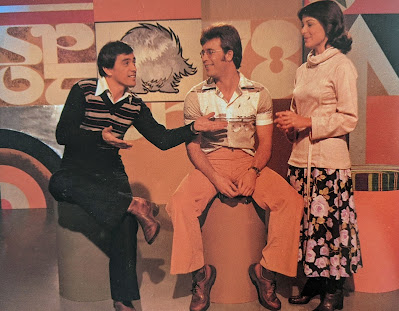Thursday music corner: Jellyfish were a San Francisco-formed power-pop group active from 1989 to 1994. Emerging from the Paisley Underground scene, they released two albums of XTC-echoing rock - Bellybutton (1990) and Spilt Milk (1993) - that cut against the grain of the early-1990s music scene's infatuation with hair metal and grunge rock. Their sound was bright, harmonious and strongly British-influenced: one June 1993 New York Times live review noted 'Its songs cheerfully invite listeners to spot the derivations: the bouncy chords from Squeeze, the falsetto voice over rumbling drums from the Beach Boys, the vocal-harmony glissandos from Queen, the arrangements from the Beatles's "Sgt. Pepper's Lonely Hearts Club Band'. They attracted growing attention by supporting World Party, the Black Crowes and Tears For Fears on tour, and played to 72,000 at Wembley Stadium in London as one of five supports to INXS.
That Is Why was the second single from Bellybutton, following the release of The King is Half-Undressed. Written by band-members Roger Manning and Andy Sturmer, it reached number 11 on the US Modern Rock Billboard chart.
Jellyfish - That Is Why (1990)










